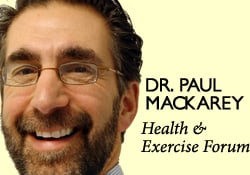 When a patient comes to our physical therapy clinic with lower back pain it is standard protocol to take a thorough history and complete a neurological exam. This is especially important if the patient has leg pain, tingling or numbness in one or both legs referred from their lower back. During the history, the patient will often reports an increase in symptoms in their legs at night in bed. They report pain, tingling, a need to constantly move their legs. While some of these symptoms are associated with lower back pain and “sciatica” others, such as the urge to constantly move the legs, is not. This may be a symptom associated with another problem such as restless legs syndrome or RLS.
When a patient comes to our physical therapy clinic with lower back pain it is standard protocol to take a thorough history and complete a neurological exam. This is especially important if the patient has leg pain, tingling or numbness in one or both legs referred from their lower back. During the history, the patient will often reports an increase in symptoms in their legs at night in bed. They report pain, tingling, a need to constantly move their legs. While some of these symptoms are associated with lower back pain and “sciatica” others, such as the urge to constantly move the legs, is not. This may be a symptom associated with another problem such as restless legs syndrome or RLS.
Recently, more information has become available on restless legs syndrome (RLS).
According to the RLS Foundation, RLS is a neurological condition suffered by approximately 10% of the population in the United States. It is considered a central nervous system disorder. There are many manifestations of this disease. Some people suffer only mild symptoms creating urges to move their legs in bed at night. Others suffer severe symptoms of uncontrollable urges to move their legs sitting or lying. The problem may lead to insomnia, disrupted sleep, distress and fatigue. Two main types of RLS have been identified. One is genetic among first-degree relatives. This type develops earlier in life and the symptoms are more severe. There is also an iron deficiency associated with genetic RLS. The other type is non-inherited or idiopathic. This type is more associated with aging. There are several criteria to diagnose RLS. Also, there are medications and other treatment options available for RLS. Exercise, including stretching, walking and weight-training can be very effective.
The RLS Foundation Has 4 Criteria for Diagnosis of RLS:
Medication – 2 FDA- Approved Dopaminergic Agents:
Behavioral Management
Sources: RLS Foundation, Rochester, MN & Today in PT
Read Dr. Mackarey’s Health & Exercise Forum – every Monday in the Scranton Times-Tribune.
This article is not intended as a substitute for medical treatment. If you have questions related to your medical condition, please contact your family physician. For further inquires related to this topic email: drpmackarey@msn.com
Paul J. Mackarey PT, DHSc, OCS is a Doctor in Health Sciences specializing in orthopaedic and sports physical therapy. Dr. Mackarey is in private practice and is an associate professor of clinical medicine at The Commonwealth Medical College.